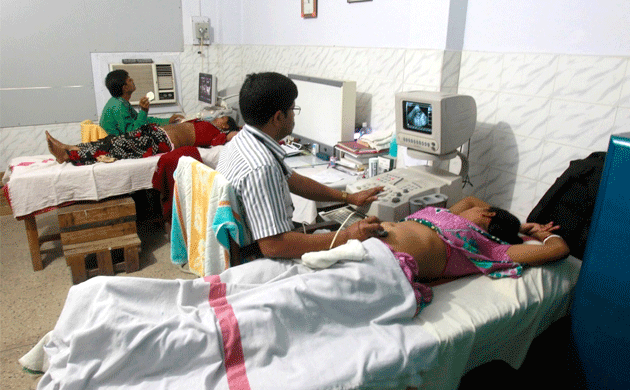
India Short Of 5 Lakh Doctors, 1674 People Dependent On 1 Doctor, Worse Than Algeria, Vietnam And Pakistan
5 Sep 2016 6:25 AM GMT
Reports from Orissa and Kanpur of a woman and a boy being carried by their relatives on their shoulders after they were denied medical care shook the entire nation. As we hang our heads in shame, we must also look at why such tragic situations occurred in the first place. It is not hidden that public healthcare in India is in a really bad shape. But a report tabled in Rajya Sabha early this year provides statistical evidence for this. As per its analysis by the website IndiaSpend, the country is short of as much as 5,00,000 doctors. This means that it needs 67% more doctors than what it has in order to provide sufficient healthcare to everyone.
Findings of the report:
As per the report of the Parliamentary Standing Committee on Health and Family Welfare, India had 7,40,000 active doctors at the end of 2014. This gives an abysmal doctor-patient ratio of 1:1674, worse than Algeria, Vietnam and Pakistan. To achieve the ideal ratio of 1:1000 as prescribed by WHO, India needs to add close to 5,00,000 doctors to its workforce. Considering that medical education takes a long time to complete, even if we add so many medical seats in the country now, it will still not achieve the desired ratio due to the high rate of population growth.
As per IndiaSpend, there is an 83% shortage of specialist medical professionals in community health centres (CHCs). The public health centres operating in rural areas are short of 3,000 doctors, and the scarcity has tripled in the last 10 years. Furthermore, the current count of 7,40,000 doctors may contain names of those who have passed away, retired from practice or shifted out of India. Hence the figures in front of us are the most optimistic possible.
Crumbling state of medical education:
One of the main reasons cited in the report for this shortage is the bad state of medical education in the country. Upto 55% of new MBBS graduates come from private colleges, which charge rampant capitation fees and do not uphold the quality of education. As per a Times Of India report from a college in Tamil Nadu, it now costs a medical student from that college Rs 2 crore to get his/her MBBS degree. This scenario discourages so many students from taking up medical as their profession as they simply cannot afford the education.
Every year, 55,000 doctors complete their MBBS and 25,000 post graduation nationwide. But the distribution of MBBS seats across states is highly staggered. Six states, which represent 31% of India’s population, have 58% MBBS seats; on the other hand, eight states, which comprise 46% of India’s population, have only 21% MBBS seats. There are 400 medical colleges operating currently, as against 23 in the year 1947. Yet, hundreds of more colleges are needed to cater to the vast population of the country.
Efforts of the government:
Thankfully, the government has put in some efforts to improve the numbers. It has approved 22 medical colleges with 1,765 seats in the last two years, according to an e-book published by the ministry of health and family welfare. As many as 5,540 MBBS seats and 1,004 PG seats have been added in the last two academic sessions. While the intentions of the government are good, the number of additional seats seems to be just an increment over the existing number, and far below what is urgently required to transform public healthcare.
The Logical Indian is deeply concerned with the state of affairs, and sincerely hopes that the government will put in much more efforts towards resolving the crisis in public healthcare that is bound to endanger the growth prospects of the nation.
This article was originally published on IndiaSpend, a data-driven and public-interest journalism non-profit.
 All section
All section













